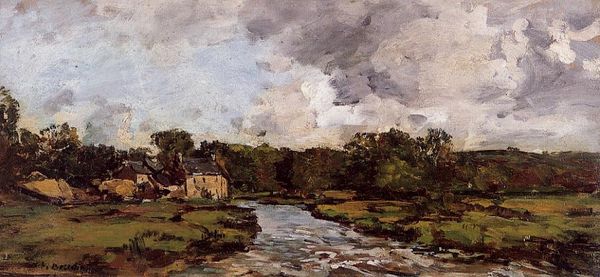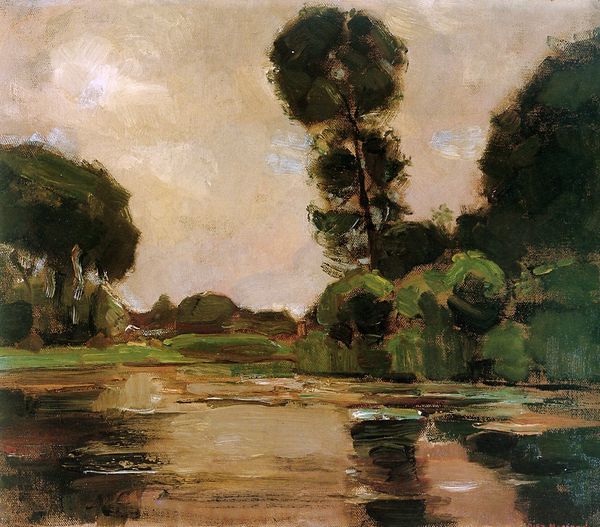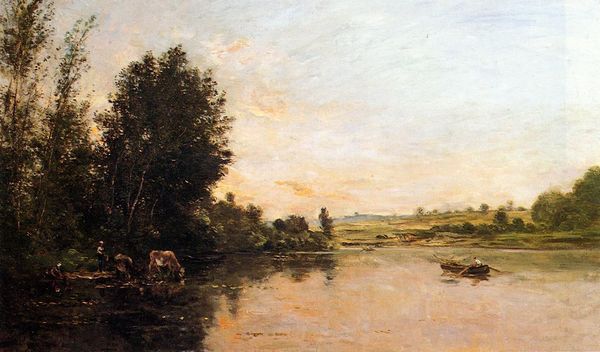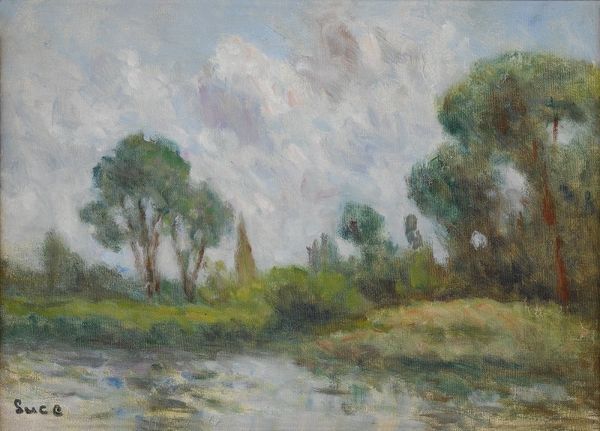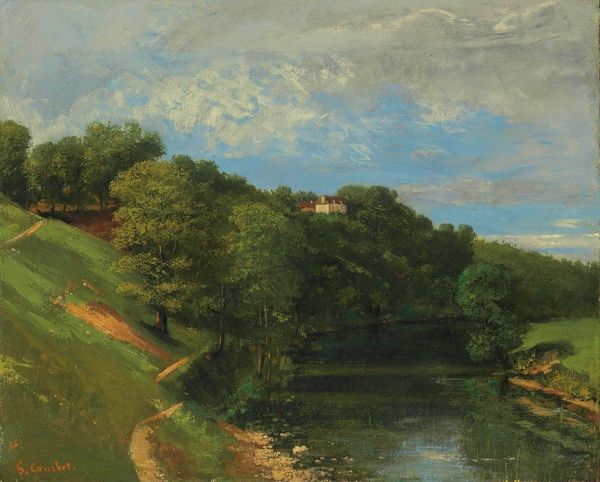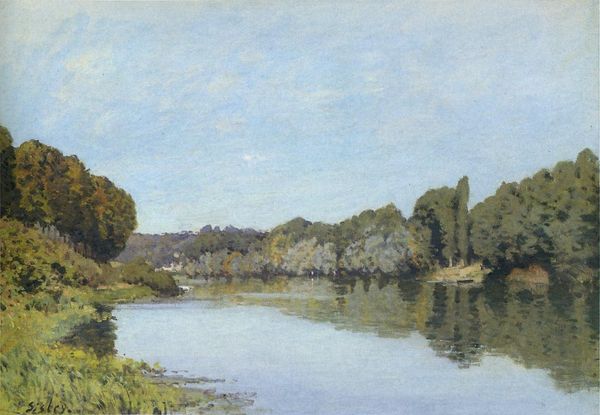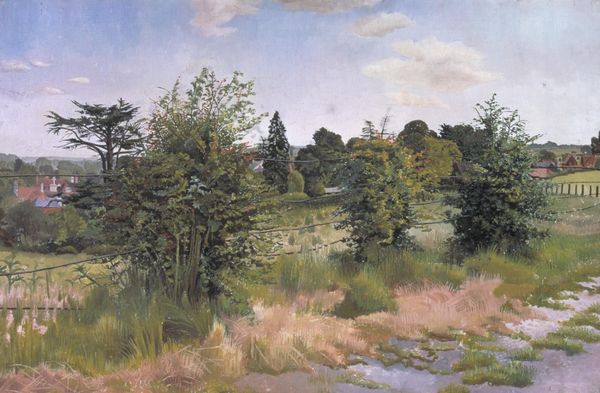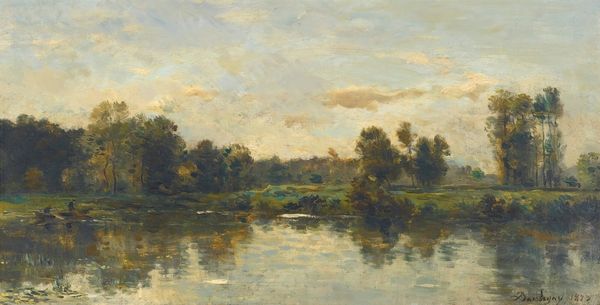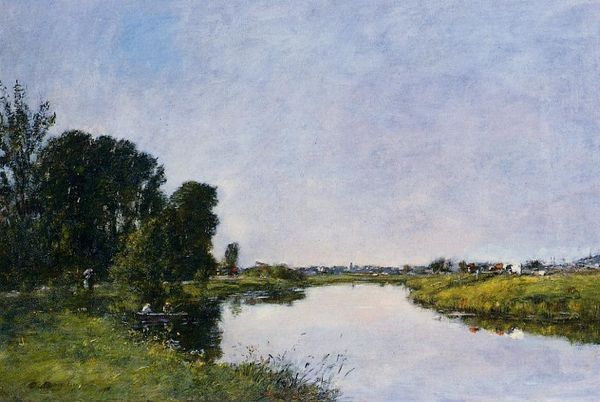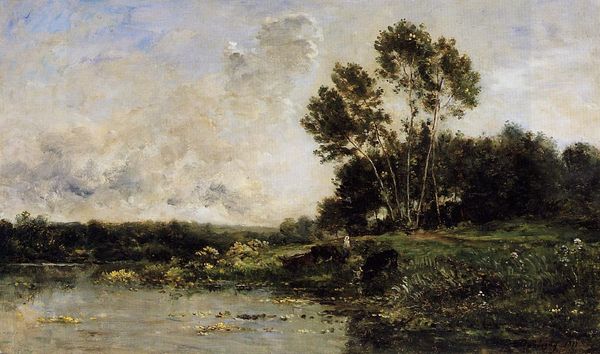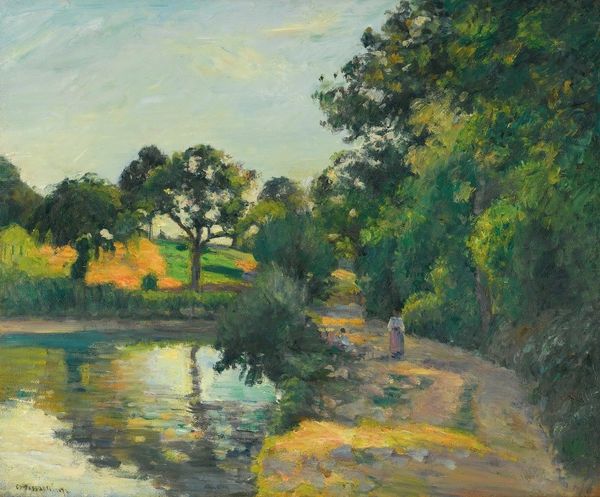
plein-air, oil-paint
#
tree
#
garden
#
sky
#
impressionism
#
plein-air
#
oil-paint
#
landscape
#
impressionist landscape
#
figuration
#
oil painting
#
forest
#
natural-landscape
#
park
Dimensions: 24 x 36 cm
Copyright: Public domain
Curator: At first glance, Caillebotte’s “Yerres, the Lawn in the Park, Seen from a Path,” dating from 1878, appears so simple, but the composition… the tones are very subtly played. Editor: Yes, the mood is definitely tranquil. It's so interesting how the artist creates this spatial recession, leading our eye so softly from the path edge toward the distant treeline, using mostly muted tones. The palette seems incredibly restricted. Curator: Right. And he's composing with a path and lawns, components of a manicured upper-class estate just outside Paris. Caillebotte’s focus diverges from earlier rural subjects, showing instead the leisure spaces afforded to the wealthy during that period of urbanization. He comes from that world, you know. Editor: Precisely. The diagonals—the path, that grassy slope to the left—intersect and structure the composition so rigorously. Even the brushstrokes add to the rhythm. Look how differently he applies the paint between the solid edge on the left, versus those broken strokes describing the water. Curator: Speaking of, his engagement with Impressionism is really interesting. On one hand, he embraces en plein air painting and broken brushwork like Monet, but his compositional rigor seems to stem more from academic training. Editor: It’s almost a classical landscape reworked through Impressionist sensibilities. Notice how light reflects off the water’s surface, but is subtly captured in the clouds as well—creating echoes between these upper and lower regions of the canvas. Curator: Absolutely. I find it fascinating how Caillebotte uses his privileged position to explore not just aesthetics, but to make understated social statements about class and leisure during the rapid changes of the late 19th century. The location itself speaks volumes about Parisian bourgeois culture at that time. Editor: True. In its elegant constraint, the painting also invites the viewer to pause and enjoy the calmness of this location. There’s a certain quiet pleasure to be gained from really seeing and internalizing his carefully chosen, expertly placed forms. Curator: I agree completely. It prompts reflection not only on visual beauty, but the social structures that shaped our relationship with nature then and even now. Editor: Yes, I leave with an increased awareness of the beauty in understated painting. The limited range actually helps the scene to register deeper than more extravagant renderings.
Comments
No comments
Be the first to comment and join the conversation on the ultimate creative platform.

